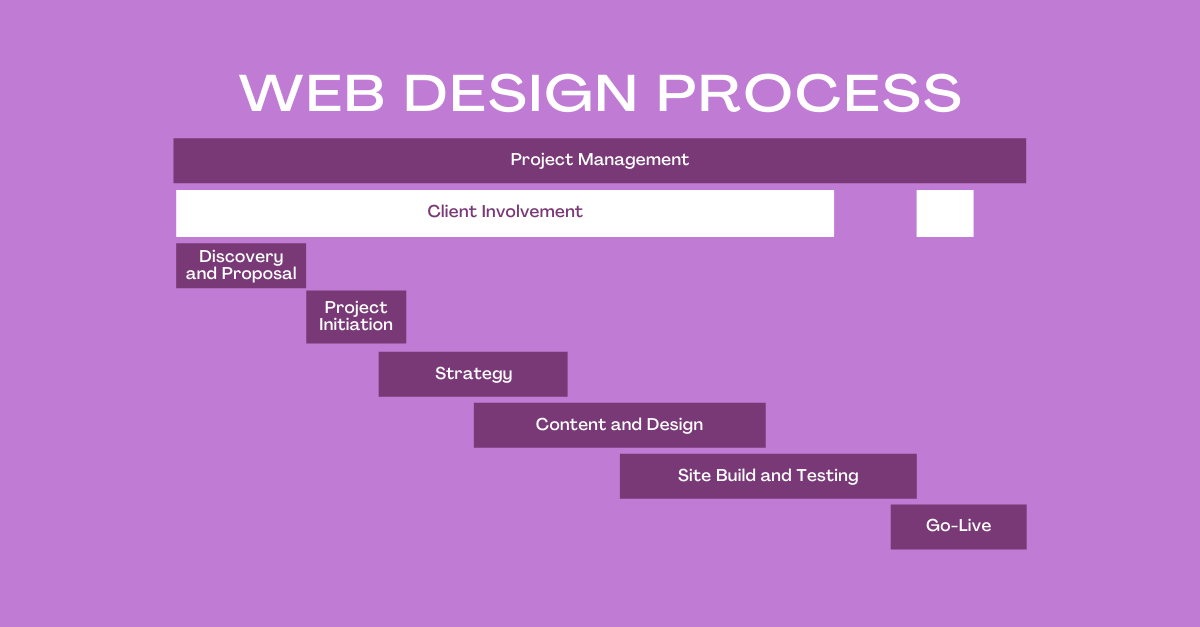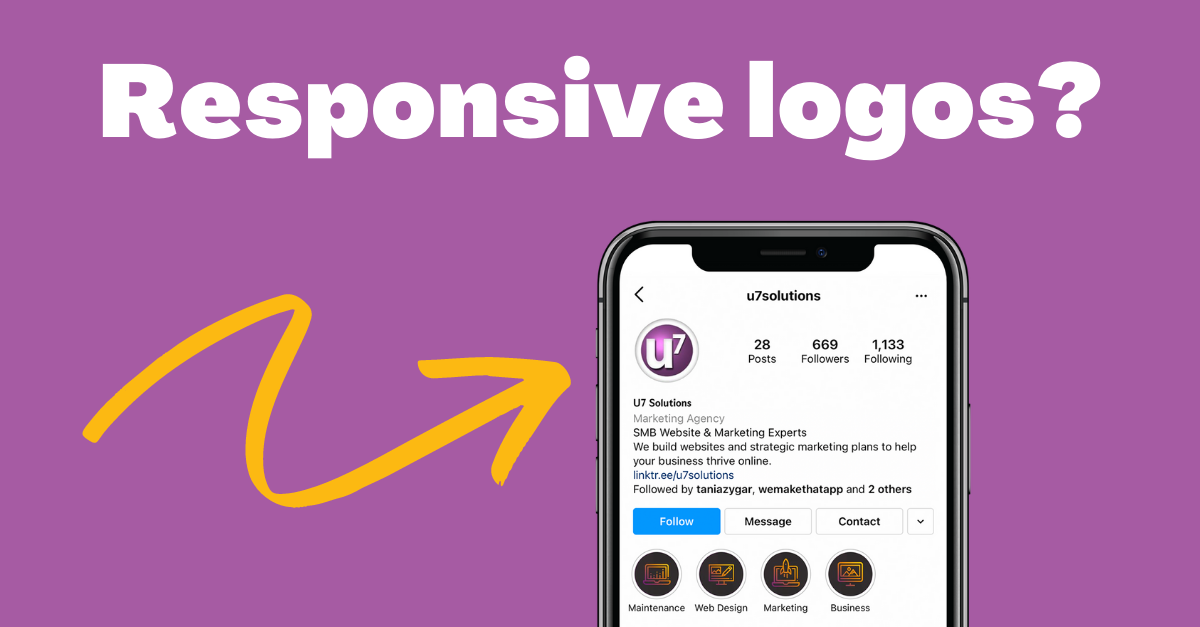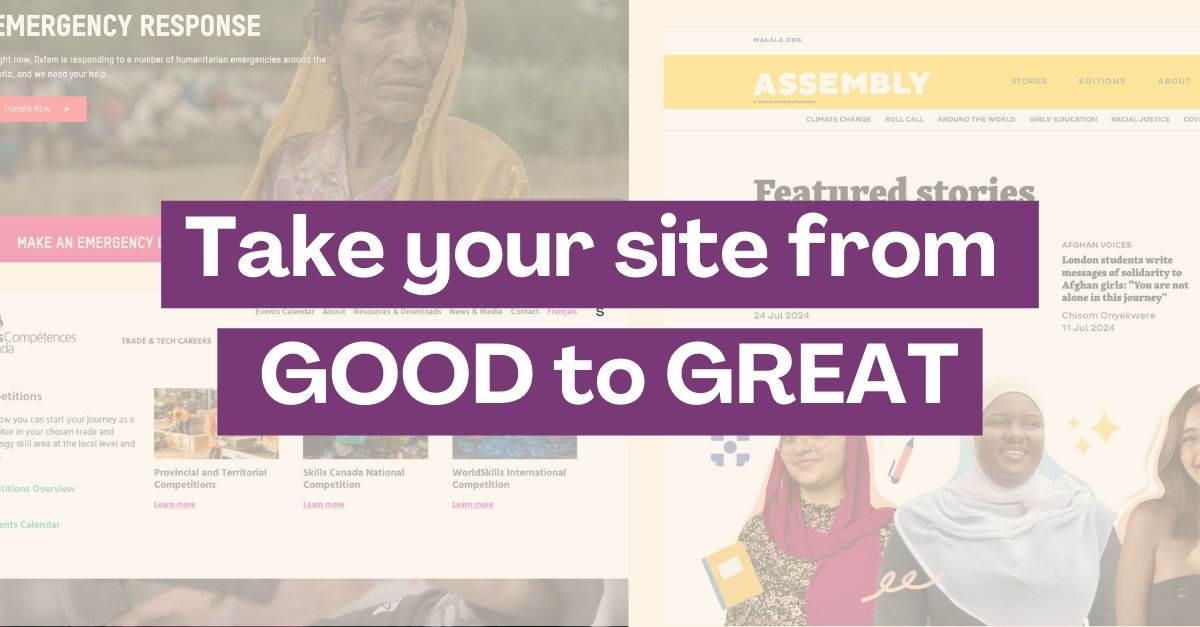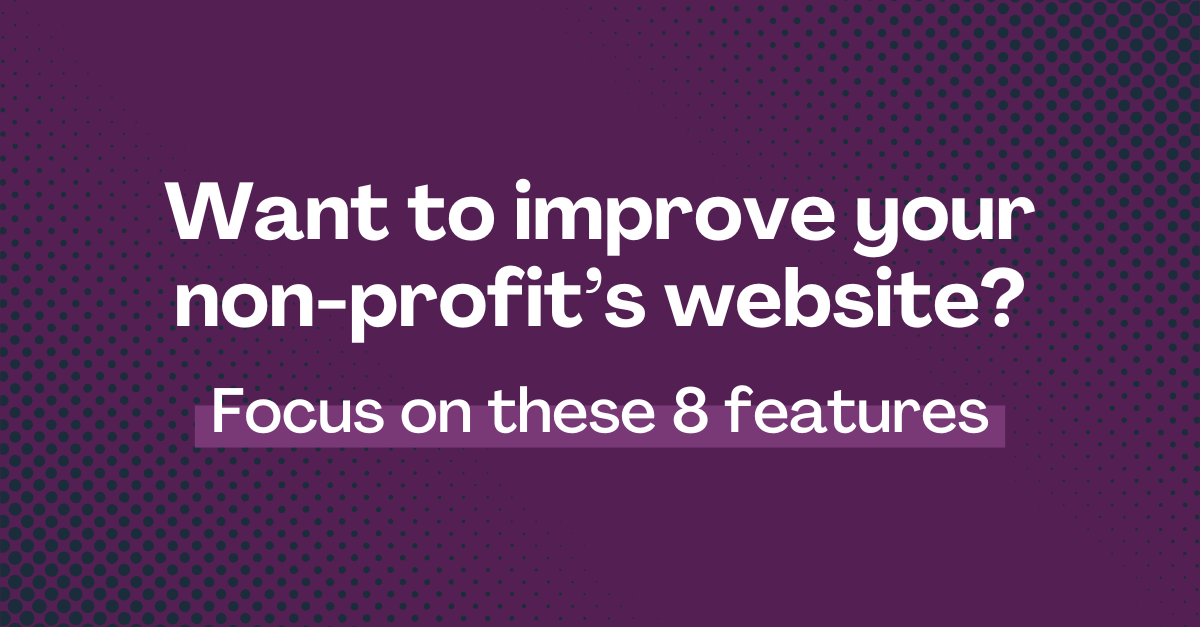Choosing and Tracking the Right KPIs for your Non-Profit
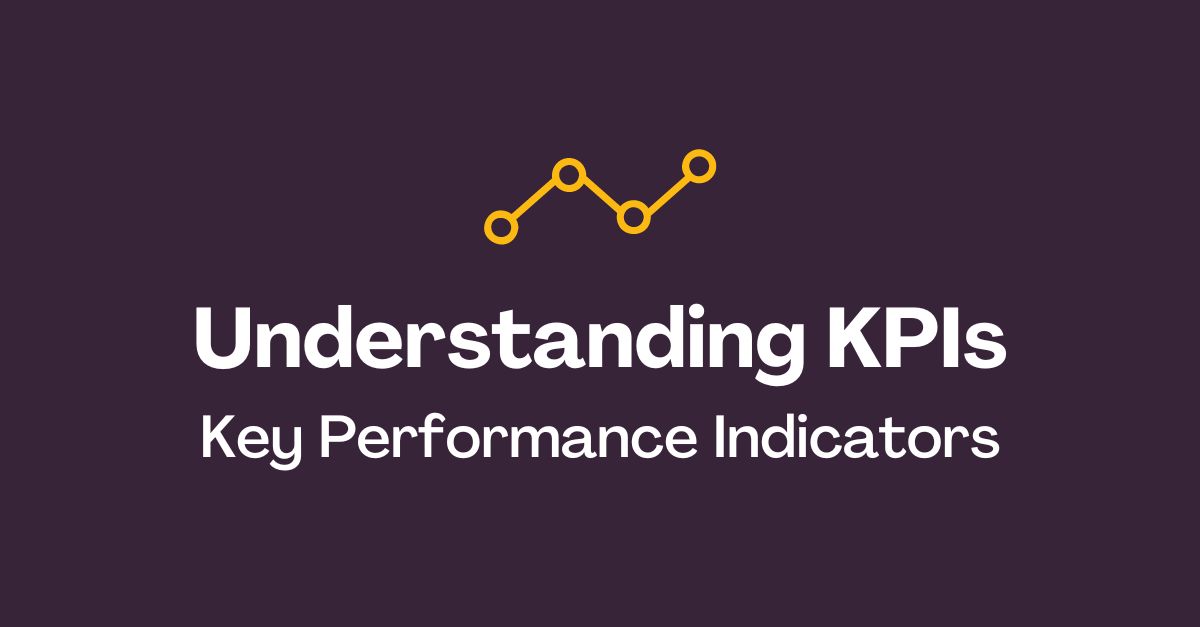
KPIs are your secret weapon in navigating your organization’s performance—they’re the numbers that tell you if your strategies are winning or need a tweak.
They empower you to make data-driven decisions, so that your moves align with your overarching objectives.
Whether it’s boosting donor engagement, increasing event attendance, or improving program outcomes, KPIs illuminate the path to success.
In essence, choosing and monitoring the right KPIs means you’re always at the helm, ready to steer your nonprofit towards its goals with precision and confidence.
How to identify KPIs
Here’s a systematic approach you can follow:
1. Set clear objectives
Define what success looks like for your non-profit. If the objective is to increase community engagement, a clear goal could be to double the number of online volunteer sign-ups within the next year.
2. Identify key drivers
Determine which activities drive those objectives. For the objective of increasing community engagement and volunteer sign ups, key drivers might include improving website usability and forms, enhancing social media presence and content around volunteering, and launching targeted email campaigns.
3. Select specific KPIs
Choose KPIs that measure the performance of these key activities.
- Website usability and forms: web traffic to key volunteer-related pages, completion of forms
- Social media presence: new follower increase, engagement rate (likes, comments, shares), private messages, clicks to website, and social media traffic to website
- Email campaigns: increase in email subscriber sign ups on website for volunteer-related information, open rate of emails, clicks on emails, traffic to website from emails
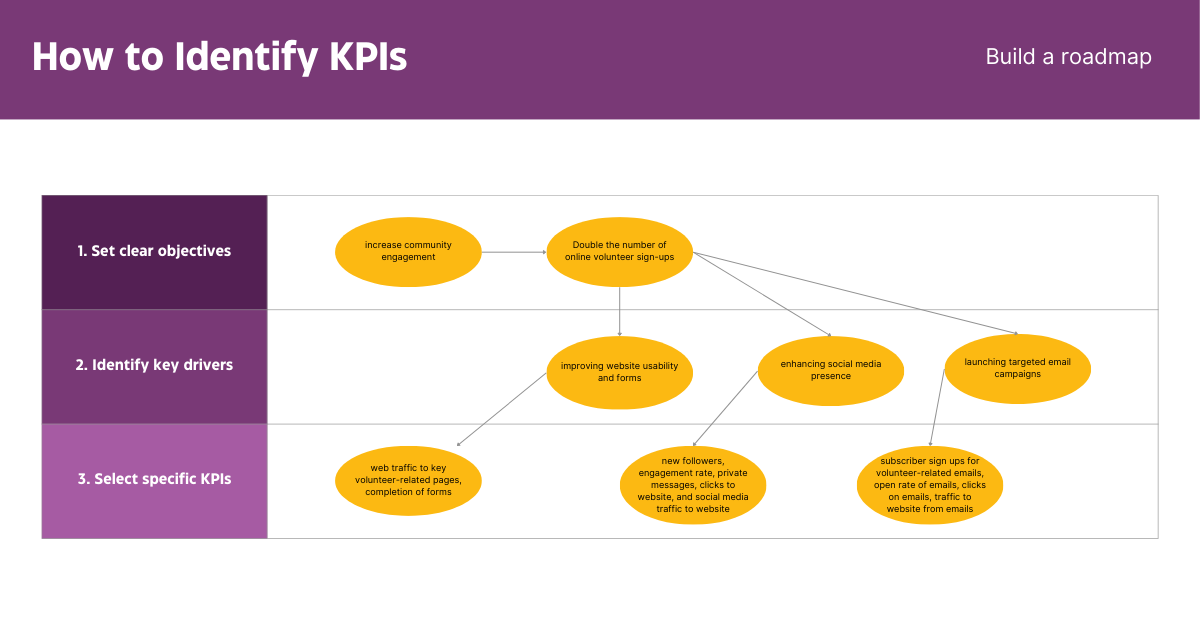
Collecting data for your KPIs
Knowing what your KPIs should be is one thing, and ensuring you are tracking them is a whole other ball game, especially in the digital age – it often requires technical expertise and set up.
Thankfully there are a ton of free and paid tools on the market that can not only collect the data, but also consolidate it in easy-to-digest reports.
For an in-depth look at the tools our agency uses, read our blog article about The Best Tools for Your Non-Profit Digital Marketing Reporting.
Most marketing channels and tools you will use will have analytics – for example, email marketing tools automatically report on open rates, subscribers, and clicks.
Social media platforms offer insights when you set up business pages and accounts.
Paid advertising platforms such as Google Ads or Meta Business Suite for Facebook and Instagram track tons of metrics like impressions, video views, followers and clicks for your ads.
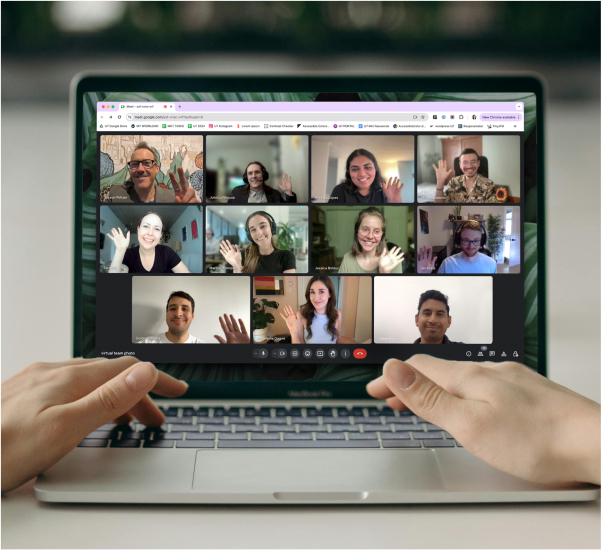
Boost your online presence with our help
- Web design and development
- SEO and PPC
- Social media strategy
- AI technology
What gets tricky is your website and SEO data.
Your website should ALWAYS have the three following tools set up to track performance: Google Analytics, Google Search Console, and Google Tag Manager.
These three tools help to capture a holistic view of your website’s performance. They enable you to track things like website visitors, time spent on site, form completions, traffic coming from Google searches, and way more.
If you need help setting up these tools for your nonprofit, reach out to our team of developers, marketing, and analytics experts.
Reporting on your KPIs
Looking at all your KPI data in various tools is a headache – we know.
That’s why we’re huge huge huge proponents of centralizing that data in a tool called Looker Studio.
It’s a free tool that can combine the data from your social media, paid media, SEO, email marketing, website, and even member portals.
Looker Studio turns those numbers into beautiful, easy-to-understand visuals that tell your story effectively.
Here’s an example of charts and tables that are pulling in information from Google Analytics to the dashboard, where we can customize the look and feel of the charts, their placements onto one page.
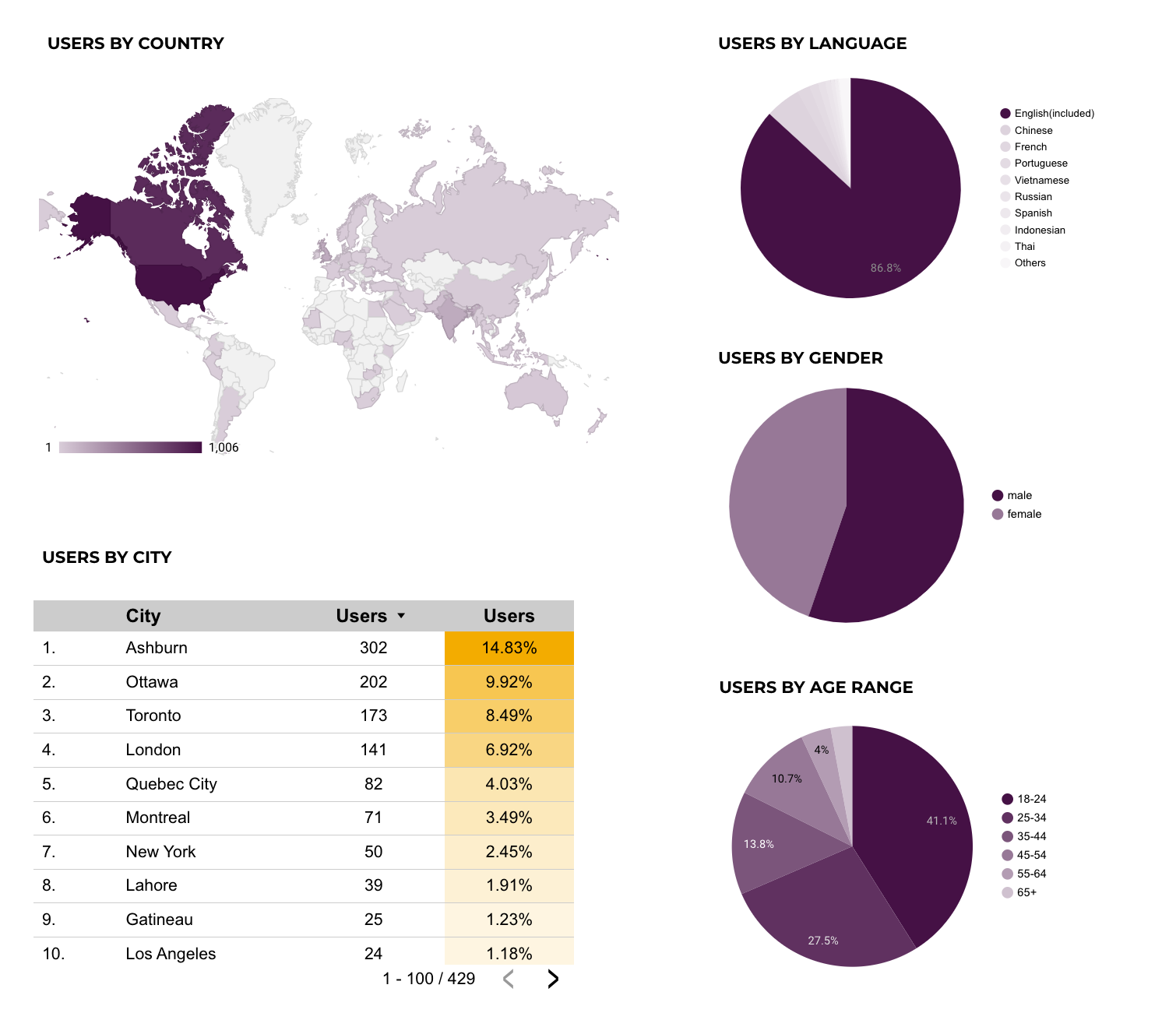
The dashboards can include as few or as many pages as desired, be branded to your organization’s style guide, and include just the right information your team needs to make decisions.
This is the outline of pages we included in our own U7 dashboard:
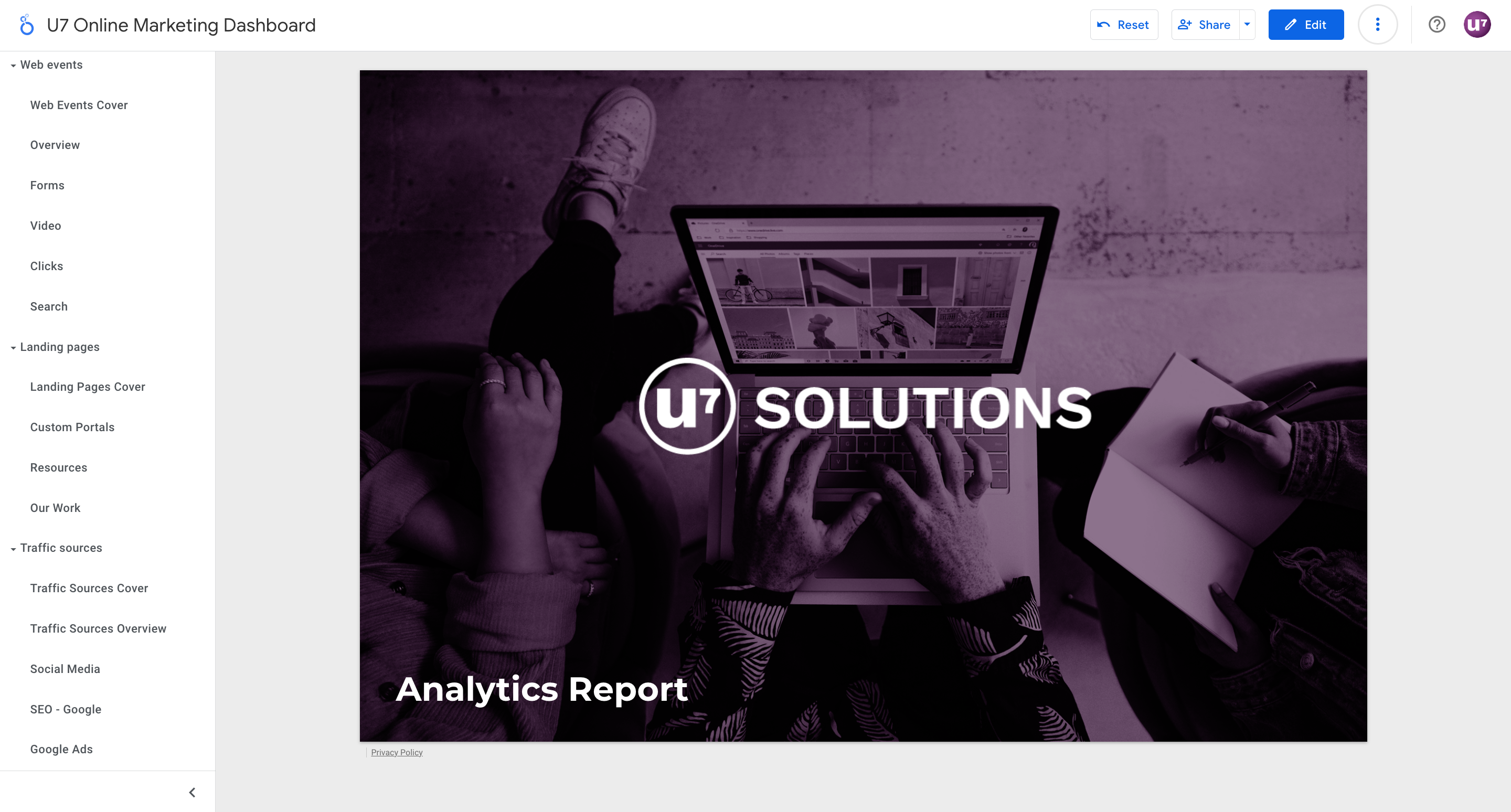
All in all, a report like this can help you demonstrate your successes, needs, and areas for improvement in a way that resonates with donors, volunteers, and board members.
Steps for ongoing KPI Management
KPI tracking is not a set-it-and-forget-it process. Regularly reviewing your KPIs to ensure they remain aligned with your evolving organizational goals is a must.
Adjust your KPIs as necessary to reflect changes in strategy or community needs. We recommend:
- Monthly Reviews: Assess KPI performance on a monthly basis.
- Quarterly Adjustments: Make adjustments to your KPIs quarterly based on performance trends.
- Annual Evaluations: Conduct a comprehensive annual review to align KPIs with long-term goals.
This work should involve meetings, spreadsheet and document updates, and also outlining the possible changes in data collection requirements and reporting required to adjust with those changes.
KPIs in action: a non-profit case study
Imagine you’re running a non-profit focused on environmental education.
Your ultimate goal is to increase community awareness and participation in your programs.
Here’s how you might use KPIs to drive your mission forward.
Define your objectives
- Increase participation in recycling programs by 20% within the next year
- Grow your online audience by 30% to spread more awareness
Identify the drivers and appropriate KPIs
For the recycling program, track the number of participants in each program.
For audience growth, monitor the number of new social media followers, email subscribers, and website users.
Use tools to track these KPIs
Set up a registration system that logs participants and attendance for each program. Check your social media’s insights for follower growth, your email marketing tool for subscribers, and Google analytics for web users. You can choose to centralize that data in a report using Looker Studio so that the information is present in one place.
Regular review and adjustment
Conduct monthly reviews to assess if the KPIs are still aligned with your goals. Adjust strategies quarterly based on what the data is showing—perhaps shifting focus to more engaging, visual content on social media if that’s what resonates with your audience.
Conclusion
Choosing the right KPIs is a fundamental aspect of effective performance monitoring and strategic planning for nonprofits.
Additionally, ensuring you are collecting the data and reporting on it efficiently will help you gain valuable insights into your organizational performance and drive greater impact.
At U7 Solutions, we specialize in customizing KPI tracking to meet the unique needs of nonprofits.
Get in touch with us and start tracking what truly matters for your non-profit.
Let's chat about your goals
OR tell us more about you
Swipe up for expert help!
